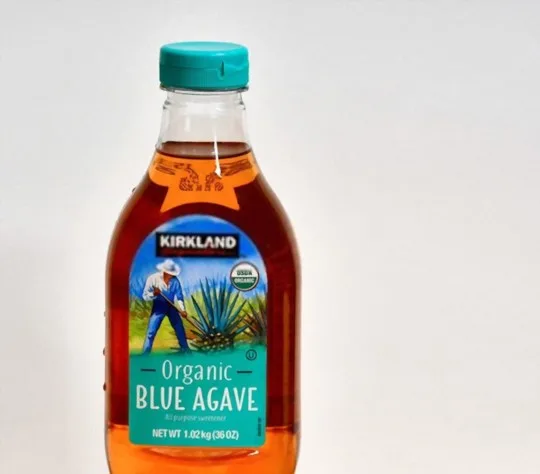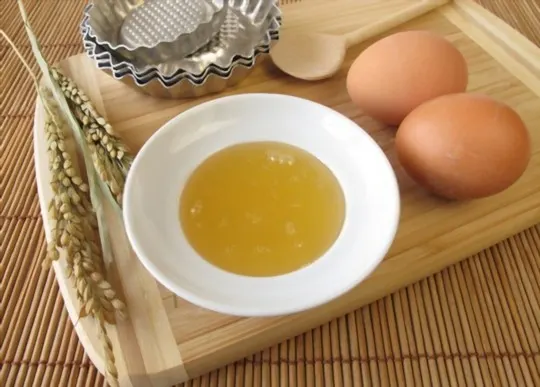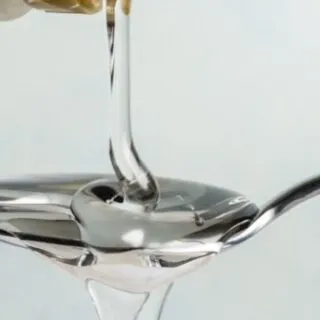Have you ever wondered why some recipes call for corn syrup when making caramel?
If you’re looking to find a healthier alternative, then you’ve come to the right place.
In this article, we’ll discuss why corn syrup is used and provide the top five substitutes so that you can make the perfect caramel without it.
Ready to learn more? Let’s get started.
What’s Corn Syrup?

Corn syrup is a thick and sweet syrup made from corn starch.
It has the same sweetness as sugar but with fewer calories and a lower glycemic index.
It’s often used in cooking, baking, candy making, and some types of alcoholic drinks.
Corn syrup is also used to prevent crystalization in some recipes such as fudge or caramel.
It’s mostly available in two varieties: light corn syrup has a milder flavor but is sweeter than dark corn syrup; it’s usually used in desserts like caramels or cookies while dark corn syrup can be used for savory dishes such as barbecue sauce.
The most common use for corn syrup is to prevent the hardening of butter and granulated sugars such as white sugar, brown sugar, and confectioner’s sugar when they are heated over high temperatures; this happens when these syrups form a stronger bond between the granules that form crystals which cause solidification.
It also adds more flavor to food; because it’s less sweet than regular table sugar, you can add more of it without compromising the flavor of your dish or dessert.
Why Do You Add Corn Syrup to Caramel?
The most common type of corn syrup used for making caramel is light corn syrup.
It contains a mixture of several types of glucose, fructose, and other sugars that give the finished caramel its soft, chewy texture.
There are many different types of corn syrups on the market, but it’s important to use light corn syrup when making caramel because it won’t break down when cooked at high temperatures.
The light corn syrup also adds sweetness without adding an overly strong flavor to the overall dish.
The addition of light corn syrup helps to prevent crystallization in caramels by stabilizing their structure and allowing the sugars in the caramel to stay suspended longer in their emulsification process.
This prevents chewy or gritty caramels as well as shortens their cooking time by as much as 15-20 minutes because crystallization no longer needs to occur.
The extra moisture provided by the corn syrup yields a softer, more pliable caramel while preventing them from becoming too hard or crunchy after they cool.
For those avoiding added sugars and processed ingredients like light corn syrup there are a few substitutes available including dark or coconut syrups such as Agave nectar or brown rice syrups that can be used with great success in many recipes calling for smaller amounts like fudge and icing recipes but may need modification when being used for larger batches of caramels being cooked over heat since they contain more fragile molecules that can be broken down during cooking processes like candy making and may cause crystals to form more quickly than needed.
5 Best Corn Syrup Substitutes in Caramel
However, some consumers may be looking for a healthier alternative or simply don’t have any corn syrup on hand.
The following are five of the best substitutes that can be used to make delicious and rich caramel without the addition of corn syrup:
1 – Honey

Honey is an excellent substitute for corn syrup because it is full of healthy natural sugars.
Honey has a rich and earthy flavor, plus it offers additional nutrients like antioxidants and amino acids, making it a much healthier choice than corn syrup.
Replace the corn syrup with an equal amount of honey when making caramel or other desserts — you can even add a teaspoon of vanilla extract to enhance the flavor.
When using honey to make candy, you should be aware that its high fructose content can cause the candy to crystalize quickly; be sure to keep your temperatures high and work quickly.
As an added bonus, using honey for caramel means that you don’t need to worry about the product having a high glycemic index since there’s no glucose in this natural sweetener.
2 – Maple Syrup

The sweetness of maple syrup is similar to that of corn syrup, but you’ll get extra flavor benefits of its unique “woodsy” flavor.
It’s also an all-natural sweetener made from the sap of maple trees, which many people prefer.
Like honey and brown rice syrup, it’s also considered a healthier alternative to corn syrup because it doesn’t contain refined sugar or high-fructose corn syrup.
Despite this, maple syrup is still high in sugar content and will add lots of sweetness to your caramel once added.
To use it instead of corn syrup in a recipe, heat the maple syrup before adding it; the viscosity helps the caramel keep its smooth texture.
To get the most out of your maple syrup’s flavor, choose one that’s grade A or B for baking and cooking applications such as making caramel.
3 – Agave Nectar

Agave nectar is a sweetener that comes from the agave plant.
It’s naturally low on the glycemic index and is sweeter than regular sugar, so you don’t need to use as much.
As with honey and maple syrup, you’ll need to reduce the other liquid ingredients in your caramel recipe.
Also, remember that agave nectar has a light floral flavor which could affect the flavor of your final product, so you may want to experiment with amounts before you commit to an entire batch.
As with any recipe substitutions, it’s best to try a small test batch first before making larger batches of candy.
4 – Sorghum Syrup
Sorghum syrup consists of the boiled juice from sweet sorghum cane.
It has a more pleasant flavor and aroma than corn syrup and it is far more nutritious, providing trace minerals and antioxidants.
The syrup is deep bronze in color, similar to molasses, and is a great source of iron as well as providing significant amounts of calcium, phosphorus and thiamin.
It is usually made from whole grain sorghum rather than seed stock.
Although you may want to reduce the cooked sugar in your recipe because this syrup will add sweetness, it can make an excellent caramel substitute.
Be sure to read the instructions carefully when substituting sorghum syrup for corn syrup because if added too early during the boiling process it may produce an excessively chewy candy or cause crystallization.
5 – Rice Syrup

Rice syrup is a good substitute for corn syrup in vegan and vegetarian recipes.
It’s also good for those with food allergies, as it usually contains no gluten or dairy.
Rice syrup can be found in specialty stores and some high-end supermarkets.
However, it’s not always easy to find and it tends to be more expensive than corn syrup.
Rice syrup has a mild sweet taste, so it won’t give your caramels the same intense sweetness that you would get from corn syrup.
In addition, rice syrup will make your caramels harder and less chewy than those made with corn syrup.
If you want the same caramel texture but without using corn syrup, you might want to consider using maple syrup or honey instead.
Conclusion
Caramel is a classic treat that has been enjoyed for centuries.
While corn syrup is commonly used as an ingredient to enhance texture and flavor, there are other sweeteners that can be used to achieve the same or similar results.
Try using honey, maple syrup, light or dark brown sugar, molasses, or agave nectar instead of corn syrup the next time you make caramel candy or sauces.
The sweetness from these can help give your caramel a unique flavor and texture.
Additionally, if you prefer a vegan-friendly alternative, try substituting coconut sugar in your caramel recipes for added richness and complexity.
Experimenting with different types of sweeteners will help you produce unforgettable batches of home-made caramel every time.

5 Best Corn Syrup Substitutes in Caramel
Ingredients
- 1 – Honey
- 2 – Maple Syrup
- 3 – Agave Nectar
- 4 – Sorghum Syrup
- 5 – Rice Syrup
Instructions
- Choose your preferred substitute from the list of options.
- Organize all of your ingredients.
- Use the proper substitute to cook your recipes.

Carrie is a food writer and editor with more than 15 years of experience. She has worked for some of the biggest names in the food industry, including Bon Appétit, Food & Wine, and Martha Stewart Living.
As the Editor in Chief of IntroChicago.com, Carrie oversees all of the content on the site. She also manages the team of contributing writers and editors, who help to create delicious recipes, helpful tips, and informative articles that you’ll find on the site.
A native of the Chicago area, Carrie is passionate about all things food. She loves trying new restaurants and experimenting with new recipes in her kitchen. She’s also a graduate of the Culinary Institute of America, so she knows a thing or two about food!
